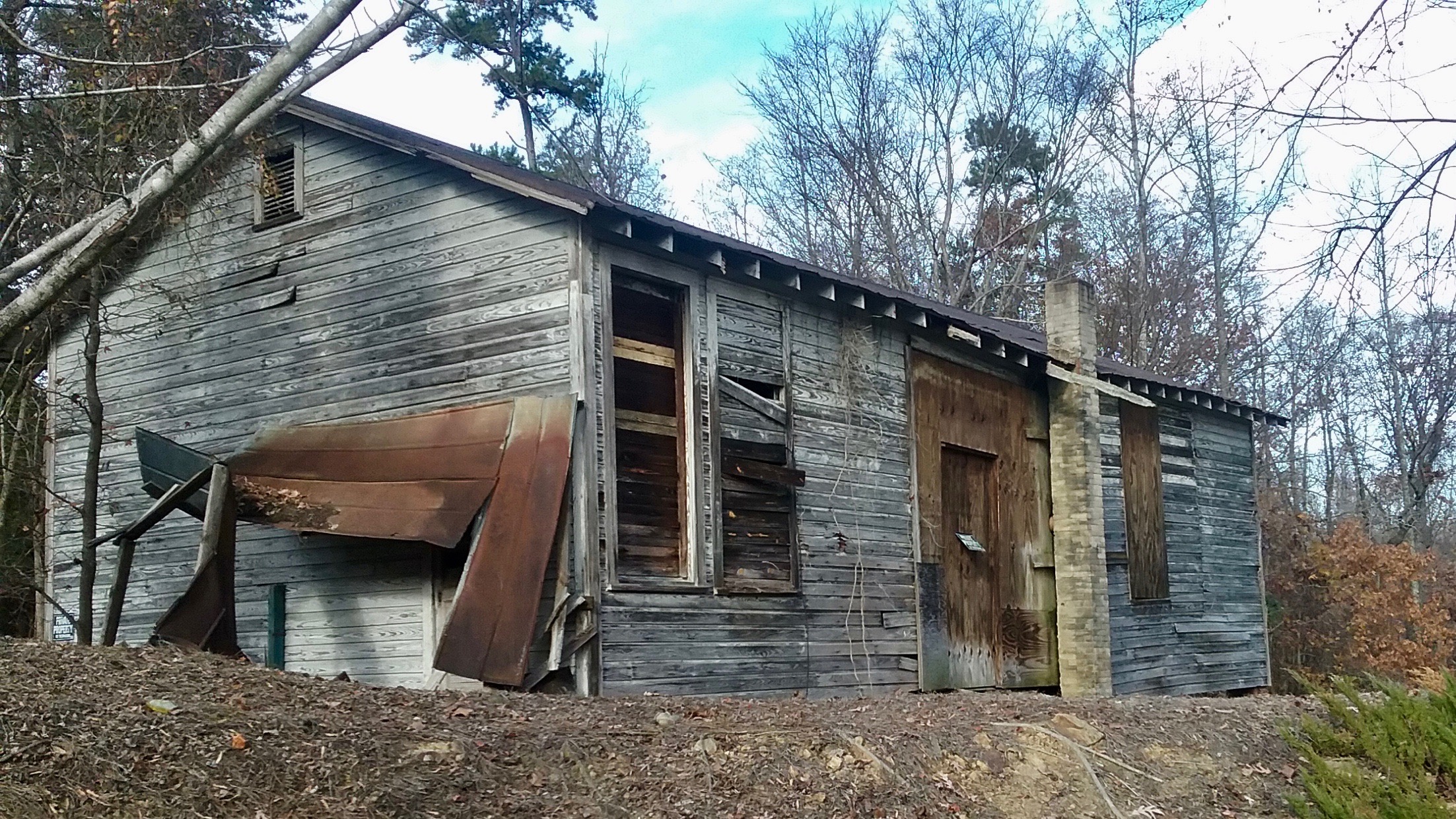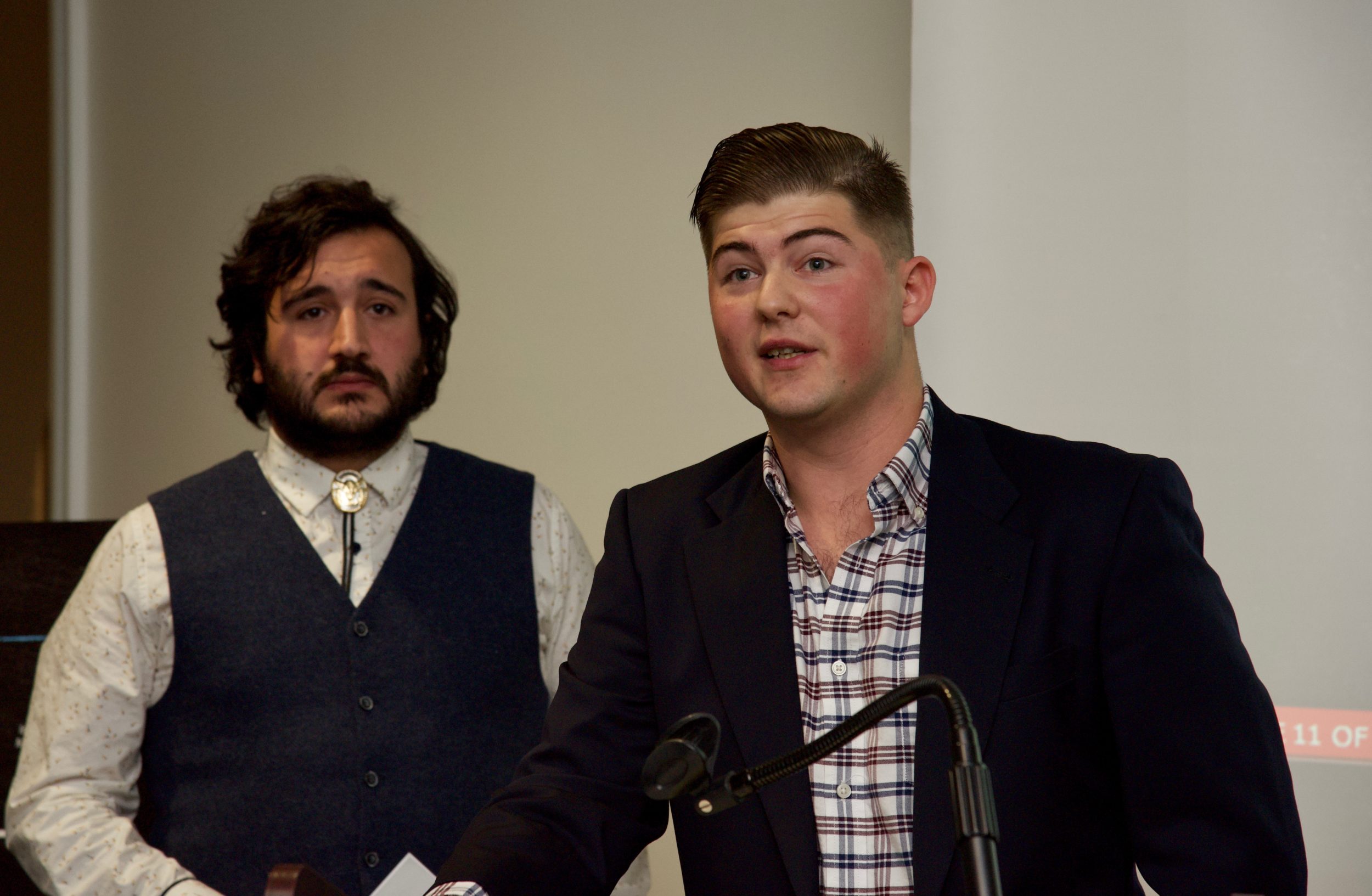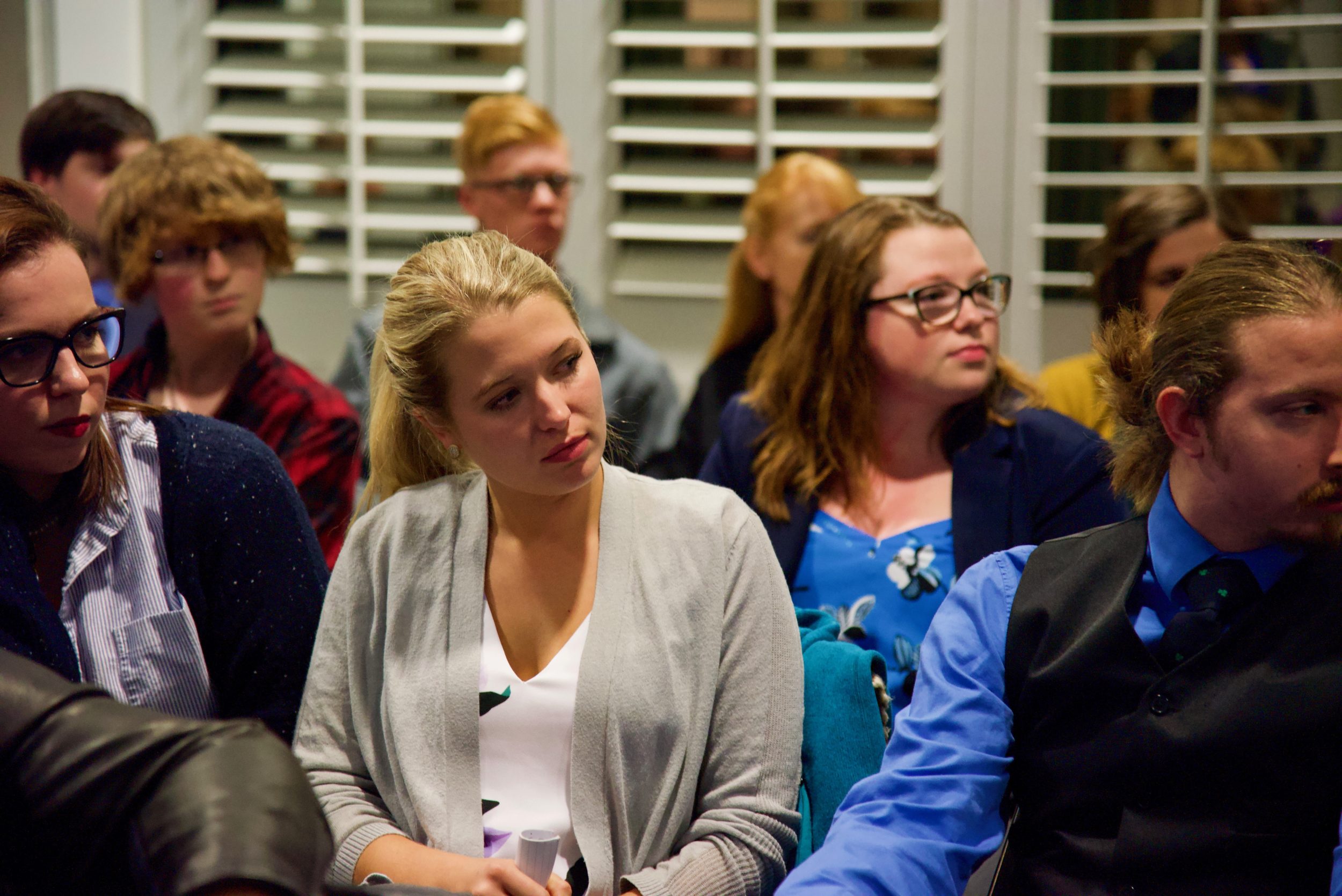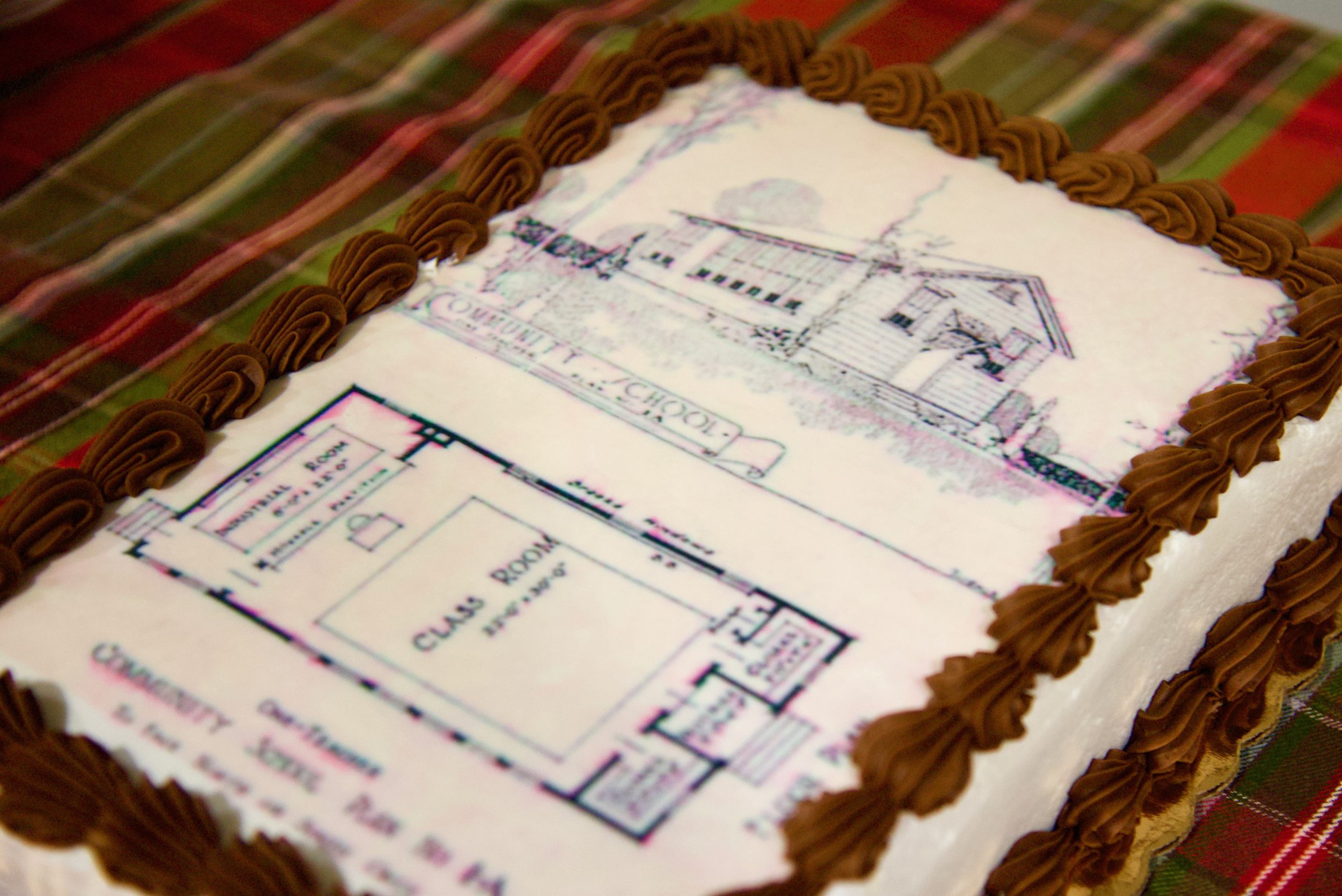Just over 2 miles from the UNC Charlotte campus sits the Siloam Schoolhouse, a small, boarded up structure. Broken glass, wind-blown trash and scraggly weeds mark the site, which is perched on a hill within sight of a bustling apartment complex. While it currently looks a bit downtrodden, the schoolhouse in reality is historically significant, as one of hundreds of schools built in the early 1900s to educate Black students in the southern United States.
UNC Charlotte students in Karen Cox’s public history class in fall 2017 learned about the magnitude of the schoolhouse’s place in history and its value to the local community. Through their hands-on research about the school, they are contributing to the planning process for the building’s potential preservation.
 “The students spent the semester studying the Save Siloam School Project, an effort to preserve a Rosenwald-era African-American schoolhouse,” said Adria L. Focht, president and CEO of Charlotte Museum of History and a UNC Charlotte alumna. “Working in three teams, they prepared three different potential interpretive plans for the museum to consider should the project move forward as planned. The students put a lot of thought and research into their projects, and provided the museum with a wealth of ideas for possible exhibits, programs, and even marketing concepts surrounding the interpretation of the Siloam School.”
“The students spent the semester studying the Save Siloam School Project, an effort to preserve a Rosenwald-era African-American schoolhouse,” said Adria L. Focht, president and CEO of Charlotte Museum of History and a UNC Charlotte alumna. “Working in three teams, they prepared three different potential interpretive plans for the museum to consider should the project move forward as planned. The students put a lot of thought and research into their projects, and provided the museum with a wealth of ideas for possible exhibits, programs, and even marketing concepts surrounding the interpretation of the Siloam School.”
 In December, Charlotte Museum of History staff, board members, and partners met with the students to hear details of the students’ research findings and their recommendations, presented in person and in written reports.
In December, Charlotte Museum of History staff, board members, and partners met with the students to hear details of the students’ research findings and their recommendations, presented in person and in written reports.
“As the museum continues to garner support for the Save Siloam School Project, these plans will be valuable resources,” Focht said. “We at the museum are deeply grateful for UNC Charlotte, Dr. Cox, and her students, for completing this work which will benefit the museum and the community we serve.”
The students’ research and collaboration may have started in the school’s past, but their work also speaks to contemporary issues.
 “Students have learned a variety of lessons about the American South through their study of the Siloam Schoolhouse, learning about African American education in the Jim Crow South, about segregation more broadly, about education in the Charlotte area, and even the re-segregation of area schools since the 1990s,” said Cox, professor of history and founding director of the public history graduate program in the College of Liberal Arts & Sciences. “They’ve also learned about seminal court cases that shaped how education would be delivered to the African American community in the South.”
“Students have learned a variety of lessons about the American South through their study of the Siloam Schoolhouse, learning about African American education in the Jim Crow South, about segregation more broadly, about education in the Charlotte area, and even the re-segregation of area schools since the 1990s,” said Cox, professor of history and founding director of the public history graduate program in the College of Liberal Arts & Sciences. “They’ve also learned about seminal court cases that shaped how education would be delivered to the African American community in the South.”
Students explored how the past can influence solutions to modern-day problems. “One of the biggest lessons from my public history studies is that embracing local history can be a great force for community engagement,” said student Bryan Gable. “A lot of people go through their education thinking that history is a monotonous list of names and dates confined strictly to the past.”
The three teams applied their research in a practical way. Students worked on this project with the mindset that the schoolhouse would be preserved and relocated to grounds of the Charlotte Museum of History. “They developed interpretive plans for the Siloam Schoolhouse that included an exhibit plan, educational materials, and a digital presence for the school,” Cox said.
 During their research, students learned about Rosenwald schools. Booker T. Washington of the Tuskegee Institute and Julius Rosenwald, philanthropist and president of Sears Roebuck, built these schools for African- American children across the South in an effort to advance Black education. By 1928, one-third of the South’s rural Black school children and teachers were served by Rosenwald Schools, according to the National Trust for Historic Preservation.
During their research, students learned about Rosenwald schools. Booker T. Washington of the Tuskegee Institute and Julius Rosenwald, philanthropist and president of Sears Roebuck, built these schools for African- American children across the South in an effort to advance Black education. By 1928, one-third of the South’s rural Black school children and teachers were served by Rosenwald Schools, according to the National Trust for Historic Preservation.
While the UNC Charlotte students could not confirm Siloam Schoolhouse is a Rosenwald school, they did determine it was built in the same style. They also learned about the deeper issues affecting education for Black students in that era.
“I did not grow up around Charlotte or even in the South, so I knew nothing about Rosenwald schools until I came to UNC Charlotte,” Gable said. “I knew about segregation in the South from middle school and high school history classes, specifically about the idea of “separate but equal.” What was new to me was learning about the grassroots activism that facilitated the spread of Rosenwald schools. The building program sprang out of a national philanthropic effort, but it was often community leaders and state educators who used the program as a way to challenge Jim Crow laws without a complete end to segregated schools.”
 The public history students also explored the current educational environment in the Charlotte area and reflected on what can be learned from the past. “Instead of looking at education in the South as the isolation of Black students with little ability to change their circumstances, learning about the Siloam School shows us that African-American communities had the agency to create new educational opportunities, including here in Charlotte,” Gable said.
The public history students also explored the current educational environment in the Charlotte area and reflected on what can be learned from the past. “Instead of looking at education in the South as the isolation of Black students with little ability to change their circumstances, learning about the Siloam School shows us that African-American communities had the agency to create new educational opportunities, including here in Charlotte,” Gable said.
While Gable found the class directly relevant to his future career, he sees relevance for anyone interested in their community.
“I would encourage everyone to explore public history, especially as it relates to their community and our understanding of how history affects us in the present,” he said. “I enjoy the UNC Charlotte public history program because I have gotten to learn more about how Charlotte has changed as a city in the 20th century. I also been able to develop skills and gain experience that will help me in my goal of becoming a museum professional.”
Cox described the benefit that knowledge and preservation of history can provide. “All Americans should understand history,” she said. “Preserving history is key to not forgetting history, which is so important to our understanding of the ebb and flow of our development as a people and a nation.”
Note: Nancy Gutierrez, dean of the College of Liberal Arts & Sciences, serves on the museum’s board.
Words: Brian Halliburton, student writer | Image of Siloam Schoolhouse: David Hunt, public history class member | Images of Presentation: Lynn Roberson








